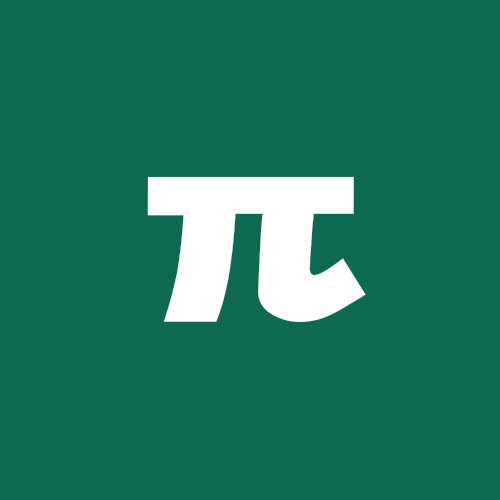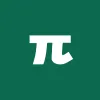In mathematical analysis, a sequence is a law that associates to each natural number \( n \in \mathbb{N} \) an element \( a_n \) belonging to a set \( X \). In other terms, a sequence is a function defined on the set of natural numbers with values in \( X \).
Table of Contents
Definition
Formally, a sequence is defined as a function:
\begin{align} a \,\, : \,\, &\mathbb{N} \rightarrow X \\ & n \rightarrow a(n) \end{align}
In this definition, \( \mathbb{N} \) denotes the set of natural numbers, namely \( \mathbb{N} = \{ 0, 1, 2, 3, \dots \} \). The set \( X \) represents the codomain, which can be the set of real numbers \( \mathbb{R} \), complex numbers \( \mathbb{C} \), integers \( \mathbb{Z} \) or another numerical or non-numerical set.
The function \( a \) associates to each natural number \( n \) an element \( a(n) \) belonging to the set \( X \). The value \( a(n) \) is called the \( n \)-th term of the sequence and is usually denoted as \( a_n \), that is \( a_n = a(n) \). The term \( a_n \) thus indicates the value taken by the sequence corresponding to the index \( n \).
A sequence can be represented explicitly through the ordered list of its terms:
\[ a_0, a_1, a_2, a_3, \dots, a_n, \dots \]
The most commonly used notation to indicate a sequence is \( \{ a_n \}_{n \in \mathbb{N}} \) or, alternatively, \( (a_n)_{n \in \mathbb{N}} \). Both notations express the fact that the sequence is composed of terms \( a_n \) for each \( n \in \mathbb{N} \).
When the set \( X \) consists of real numbers \( \mathbb{R} \) or complex numbers \( \mathbb{C} \), the sequence is called numerical. More precisely, if \( X = \mathbb{R} \), the sequence is called a real sequence, while if \( X = \mathbb{C} \), it is called a complex sequence.
For example, the sequence defined by \( a_n = \frac{1}{n} \) with \( n \in \mathbb{N} \setminus \{ 0 \} \) is a real sequence, since each term belongs to the set of real numbers.
Sequences can also have values in non-numerical sets. It is possible to define sequences of vectors, matrices, or elements of an alphabet, depending on the context of study.
From a graphical perspective, numerical sequences can be represented by associating to each index \( n \) the corresponding value of the term \( a_n \). This representation allows visualization of the sequence's behavior.
For example, the sequence defined by \( a_n = n^2 \) can be represented graphically as a series of points, whose values increase following a quadratic growth:
\[ 0, 1, 4, 9, 16, 25, \dots \]
Examples
Recursive Sequences
A recursive sequence is defined by specifying the initial values and a rule that allows calculating each successive term from the previous one. For example, the factorial of a natural number \( n \) is defined as:
\[ 0! = 1 \quad, \quad n! = n\cdot (n-1)! \]
Similarly, the power of 2 can also be defined recursively:
\[ 2^0 = 1 \quad , \quad 2^n = 2 \cdot 2^{n-1} \]
More generally, for every \( 0 \neq x \in \mathbb{R} \), we have:
\[ x^0 = 1 \quad , \quad x^n = x\cdot x^{n-1} \]
Another common example is the Fibonacci sequence, defined as:
\[ F_0 = 0, \quad F_1 = 1 \quad , \quad F_{n+2} = F_{n+1} + F_n \]
A finite sequence is defined as a sequence consisting of a finite number of terms, that is, if there exists an \( N \in \mathbb{N} \) such that \( a_n \) is defined only for \( n \leq N \). Conversely, we speak of an infinite sequence if \( a_n \) is defined for every \( n \in \mathbb{N} \).
Infinite sequences are those most commonly used in mathematical analysis and represent an essential tool for studying series, functions, and limits.
Monotonic Sequences
A sequence is called monotonic if its terms maintain a consistent pattern of increase or decrease. A sequence can be monotonically increasing or monotonically decreasing.
Increasing Sequence
An increasing sequence is defined as a sequence where each term is less than or equal to the next term. Formally, the sequence \( \{ a_n \} \) is increasing if:
\[ a_n \leq a_{n+1} \quad \forall n \in \mathbb{N} \]
If the inequality is strict, that is, if \( a_n < a_{n+1} \) for each \( n \), the sequence is called strictly increasing.
Example: The sequence \( a_n = n \) is strictly increasing, since:
\[ 0 < 1 < 2 < 3 < \dots \]
Decreasing Sequence
A sequence is called decreasing if each term is greater than or equal to the next. Formally:
\[ a_n \geq a_{n+1} \quad \forall n \in \mathbb{N} \]
If the inequality is strict, that is, if \( a_n > a_{n+1} \) for each \( n \), the sequence is called strictly decreasing.
An example of a decreasing sequence is \( a_n = \frac{1}{n} \), which takes the values:
\[ 1, \frac{1}{2}, \frac{1}{3}, \frac{1}{4}, \dots \]
Bounded Sequences
A sequence \( \{ a_n \} \) is called bounded if there exists a real number \( M \) such that:
\[ |a_n| \leq M \quad \forall n \in \mathbb{N} \]
In this case, \( M \) is called an upper bound of the sequence. If instead:
\[ m \leq a_n \leq M \quad \forall n \in \mathbb{N} \]
then the sequence is called bounded above and below, where \( M \) is an upper bound and \( m \) is a lower bound.
For example, the sequence \( a_n = (-1)^n \) is bounded, since its terms oscillate between \( -1 \) and \( 1 \).
Unbounded Sequences
A sequence is called unbounded if its terms grow or decrease without bound. Formally, \( \{ a_n \} \) is unbounded if:
\[ \forall M \in \mathbb{R}, \; \exists n \in \mathbb{N} \; \text{such that} \; |a_n| > M \]
An example is the sequence \( a_n = n \), which is not bounded above.
Oscillating Sequences
An oscillating sequence is defined as a sequence whose terms do not tend to stabilize nor to grow or decrease monotonically, but vary continuously between different values.
For example, the sequence \( a_n = (-1)^n \) oscillates between \( 1 \) and \( -1 \) without converging to a definite value.
This sequence is both oscillating and bounded.
Constant Sequences
A constant sequence is a special case of monotonic sequence where all terms are equal. Formally, a sequence is constant if:
\[ a_n = c \quad \forall n \in \mathbb{N} \]
A simple example is the sequence \( a_n = 5 \), which produces the list:
\[ 5, 5, 5, 5, \dots \]
This sequence is both increasing and decreasing monotonically, and is also bounded.
Periodic Sequences
A sequence is called periodic if there exists a natural number \( T > 0 \) such that:
\[ a_{n+T} = a_n \quad \forall n \in \mathbb{N} \]
The smallest value of \( T \) for which this property holds is called the period of the sequence.
An example of a periodic sequence is \( a_n = \sin\left(\frac{2\pi n}{3}\right) \), which has period 3.

